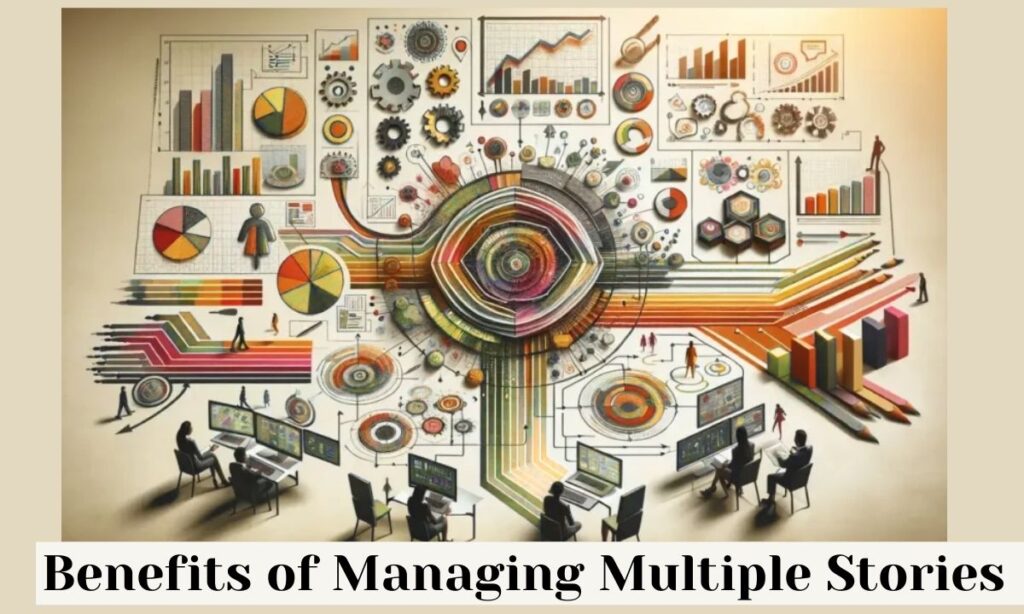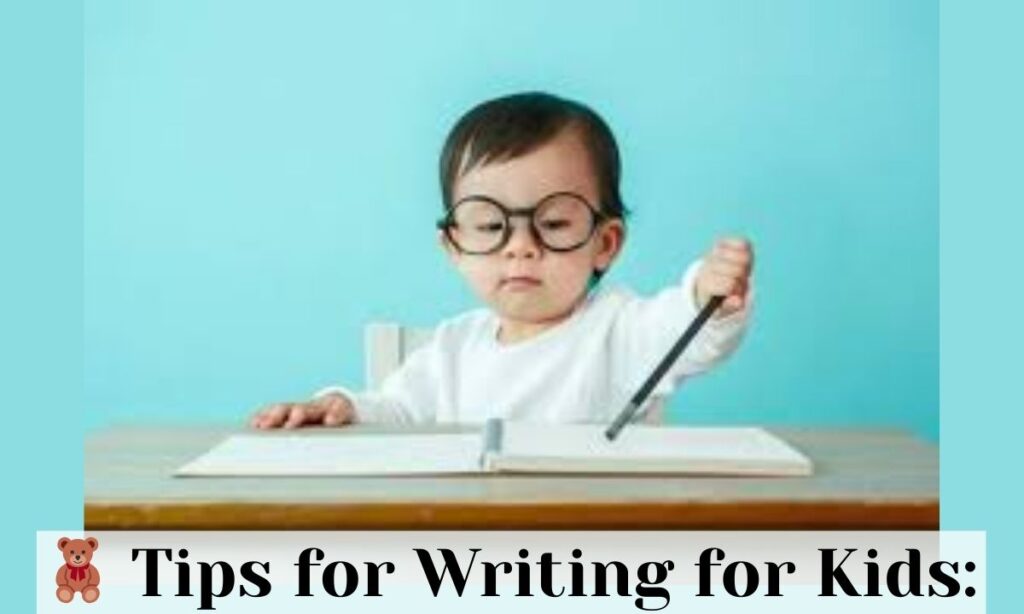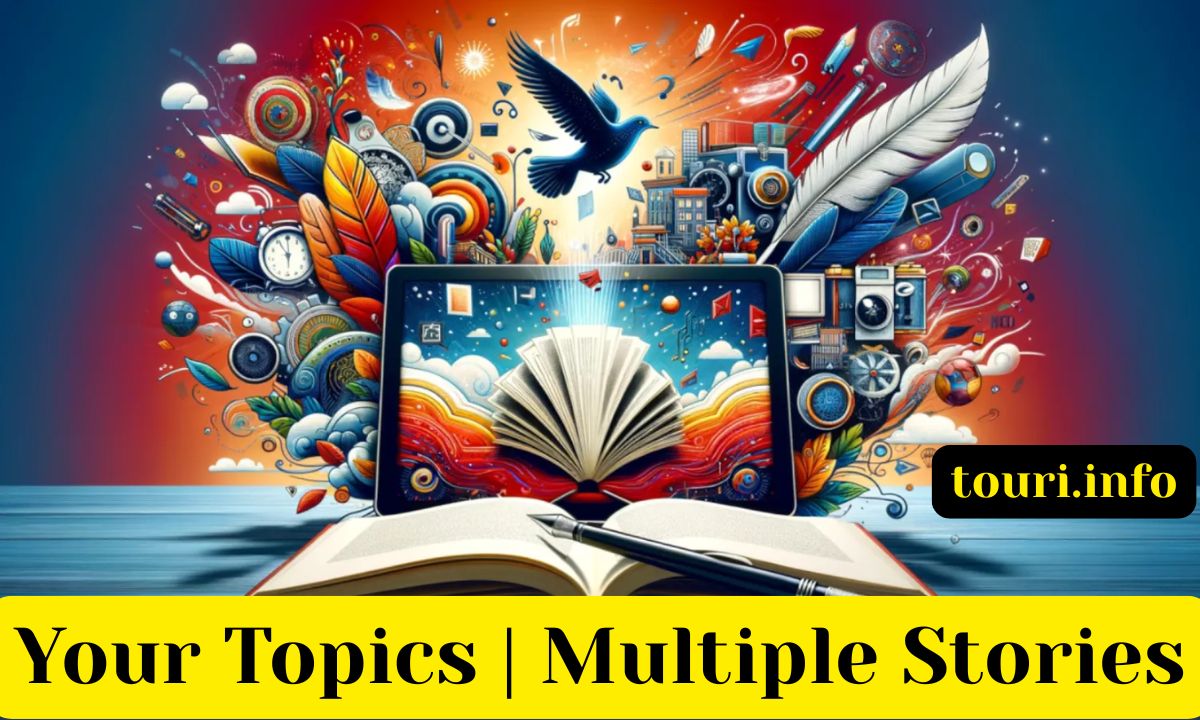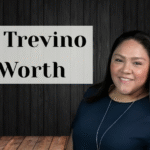In today’s content-saturated world, telling just one story isn’t enough. Your audience craves personalized experiences that resonate with their unique interests.
Welcome to the future of storytelling—where personalization meets creative expression. Let’s dive into the art of managing multiple stories within your favorite topics.
🧭 What Is “Your Topics | Multiple Stories”?
Your Topics | Multiple Stories is both a revolutionary storytelling philosophy and content strategy that puts the reader first. It’s about curating personalized content while managing multiple narratives across different formats. Think of it as your custom content universe where stories revolve around themes that matter to you and your audience.
At its heart, this approach empowers you to select topics that genuinely resonate with your audience. You can deliver multiple stories under one thematic umbrella while maintaining high engagement. It’s not just about what you tell it’s about how you tailor those stories to create meaningful connections.
✨ Benefits of Managing Multiple Stories Within Personalized Topics
When you master multiple stories within personalized topics, you unlock several powerful advantages:
Hyper-Personalization: Your audience receives content tailored specifically to their interests. This personal relevance creates stronger connections and higher engagement. People stay with content that feels made just for them.

Multi-Angle Storytelling: Explore one topic from different viewpoints, timelines, or character perspectives. This narrative complexity adds depth that single-story formats simply can’t achieve. Your ideas gain richness through varied perspectives.
Cognitive Depth: Dive deeper into themes and subplots without sacrificing cohesion. This layered approach creates thematic exploration that keeps readers intellectually engaged. Complex ideas become more digestible when presented through multiple stories.
Platform Flexibility: Apply this strategy across blogs, social media, newsletters, fiction, or educational content. Platform flexibility means your storytelling approach works everywhere. Adapt your multiple stories to suit any medium.
📖 Storytelling Topics for Adults: Go Beyond the Surface
Adult audiences crave narrative complexity that respects their intelligence. Here’s how to elevate your storytelling for mature readers:
Move beyond simple plot structures. Embrace nonlinear storytelling that challenges conventional thinking. Adults appreciate content that makes them reflect and reconsider their perspectives.
Tackle complex human emotions and moral ambiguities. Thematic coherence doesn’t mean oversimplification. The most compelling adult stories exist in the gray areas between black and white.
READ THIS BLOG : What is Hazevecad04 Version on PC? A Complete Guide
🔥 Powerful Storytelling Themes
Psychological Suspense: Dive into the human mind, trauma, and unreliable narrators. These stories explore the complexity of perception and memory. Reality becomes subjective through multiple viewpoints.
Modern Romance: Love in the age of dating apps, long-distance relationships, and rekindled connections. Contemporary relationships face unique challenges worth exploring. Multiple perspectives reveal how differently people experience love.
Historical-Fiction Fusion: Real-world eras paired with fictional characters create rich storytelling opportunities. History provides context while fiction adds emotional depth. Past events gain new meaning when viewed through multiple lenses.
Social Justice Narratives: Stories exploring race, class, gender, and mental health benefit from multiple perspectives. Complex social issues deserve nuanced treatment. Multiple stories humanize abstract concepts.
📱 Posting Multiple Stories on Digital Platforms
Digital platforms offer unique opportunities for multi-narrative storytelling:
Instagram Stories: Upload sequential stories with interactive elements like polls, questions, and quizzes. Keep each segment under 15 seconds for optimal engagement. Use highlights to organize multiple stories by theme.
TikTok: Create story series using hashtags like #StoryPart1 to connect related content. Keep videos under 60 seconds to maintain attention. Tease upcoming parts to build anticipation.
Medium/Wattpad: Post serialized chapters with strong hooks and strategic cliffhangers. Maintain consistent publishing schedules to build reader habits. Use internal references to connect multiple stories.
Kindle Vella: Focus on short, addictive chapters that leave readers wanting more. Each episode should advance the story while teasing future content. Multiple storylines keep readers subscribing.
🧩 How to Balance Multiple Themes in One Story?
Thematic coherence doesn’t mean simplicity. Great stories balance multiple themes artfully:
Focus on complementary themes that enhance rather than compete with each other. Narrative flow suffers when themes feel disconnected. The best multi-theme stories feel naturally integrated.
Establish primary and secondary themes to create clear priorities. Content organization helps readers follow complex narratives. Not every theme deserves equal emphasis.
Use characters as theme vehicles, with each representing different aspects of your message. Character development naturally incorporates thematic development. People connect with themes through characters.
🎬 Real Examples:
Breaking Bad: Core theme of morality and power, supported by family, identity, and addiction themes. Walter White’s transformation shows how these themes intersect. Multiple storylines explore different aspects of the central themes.
The Great Gatsby: American Dream as the central theme, with love, class, and betrayal as supporting themes. Each character represents a different relationship to these themes. Multiple perspectives reveal the complexity of the American Dream.
Black Mirror: Technology ethics as the primary theme, with isolation, society, and mental health as recurring elements. Each episode approaches these themes from different angles. Multiple stories create a comprehensive examination of technology’s impact.
📌 Techniques to Weave Multiple Themes:
Anchor one main theme. The rest should support or challenge it. This creates thematic coherence while allowing complexity. Your story gains focus without becoming one-dimensional.
Assign themes to characters. Let each one embody a different struggle or perspective. Characters become living embodiments of your themes. Reader connection with characters deepens theme engagement.
Use motifs and symbols throughout your narrative. Repeated elements unify seemingly disparate storylines. Visual and verbal patterns create subconscious connections between themes.
Create thematic milestones in your story structure. Key moments should advance multiple themes simultaneously. Strategic planning ensures themes develop naturally throughout your narrative.
🧠 Too Many Story Ideas? Here’s How to Manage Them
Creative minds often generate more ideas than they can use. Content organization is crucial:
Don’t let good ideas vanish. Capture everything—even fragments—before they disappear. Great stories often start as simple concepts. Multiple ideas can combine into something exceptional.
Review your ideas regularly to spot connections and opportunities. Topic clustering reveals natural groupings among seemingly unrelated concepts. The best multi-narrative stories often begin as separate ideas.
Set clear criteria for which ideas to develop now versus later. Not all ideas deserve immediate attention. Strategic prioritization ensures you focus on your most promising concepts.
🛠️ The Story Bank Method:
Idea Dump: Write every concept, no matter how raw or unformed. Quantity matters at this stage, not quality. Capture ideas in whatever form they arrive.
Label by Format: Sort ideas by what they might become—short story, essay, series, etc. Different formats suit different concepts. Some ideas naturally work better as multiple stories.
Theme Tags: Categorize by themes like romance, dystopia, redemption, etc. This creates natural groupings within your idea collection. Multiple themes often appear across different story concepts.
Merge Ideas: Combine two weak concepts to create one strong one. Sometimes the magic happens when unexpected elements meet. Multiple story threads can strengthen each other.
Use Mind Maps: Create visual connections between related concepts. Sometimes seeing ideas graphically reveals new possibilities. Multiple stories might share common elements worth exploring.
🌍 Your Topics in Different Languages & Cultures: Spotlight on Urdu Stories
Storytelling traditions vary beautifully across cultures, offering fresh perspectives on narrative structure and thematic exploration:

Different cultures prioritize different storytelling techniques. Understanding these differences enriches your own approach. Cultural traditions offer unique insights into universal human experiences.
Translating your stories requires more than language conversion. Cultural context shapes how stories are received. Multiple cultures interpret the same story elements differently.
🕌 Top Urdu Story Themes:
Sufi Mysticism: Journey of the soul and divine love permeate Urdu literature. These stories explore spiritual transformation through metaphor. Multiple interpretations create layers of meaning.
Romantic Tragedies: Passionate yet heartbreaking tales that examine love’s complexities. These narratives often challenge social conventions. Multiple perspectives reveal different facets of love and loss.
Social Commentary: Stories about honor, poverty, and women’s rights reflect cultural realities. These narratives often examine societal structures. Multiple stories show different aspects of social issues.
War & Resistance: Fictionalized retellings of historical struggles capture national identity. These stories preserve cultural memory. Multiple narratives show different impacts of historical events.
✍️ Writing Essays with Multiple Topics: Structure Matters
Essays with multiple topics require careful information architecture to maintain coherence:
Start with a clear thesis that encompasses your multiple topics. Unity begins with a strong central concept. Multiple topics should connect to one overarching idea.
Create smooth transitions between topics to maintain narrative flow. Abrupt shifts confuse readers. Logical connections between sections enhance readability.
End with a conclusion that reinforces connections between your topics. Synthesis creates lasting impact. Multiple topics should ultimately feel like parts of a whole.
🧱 Best Structure:
Introduction: Define your overarching idea that connects multiple topics. This thesis statement provides focus for what follows. Your readers need to understand the relationship between topics.
Body Paragraphs: Develop each topic fully before transitioning to the next. Use topic sentences to signal shifts in focus. Strategic organization helps readers follow complex discussions.
Transitions: Connect topics with phrases like “In contrast,” “Building on this,” or “Similarly.” These verbal bridges maintain narrative flow. Smooth transitions keep readers engaged across topic changes.
Conclusion: Synthesize insights from all topics to reinforce your thesis. Show how the topics work together. Multiple perspectives should create a more complete understanding.
✏️ Short Story Prompts by Genre
Fresh story ideas can kickstart your multi-narrative creativityFresh story ideas can kickstart your multi-narrative creativity. For mystery lovers, consider a retired detective who solves cold cases anonymously via podcast, where past and present timelines reveal different aspects of each case and multiple narrators offer conflicting accounts.
| Genre | Prompt | Multi-Narrative Potential |
| Mystery | A retired detective solves cold cases anonymously via podcast. | Past and present timelines reveal different aspects of each mystery. Multiple narrators offer conflicting accounts of events. |
| Sci-Fi | A world where memories can be bought and sold creates ethical dilemmas. | Different characters experience this technology in unique ways. Multiple storylines explore various implications of this concept. |
| Romance | Two lovers only meet in dreams but search for each other in waking life. | Their perspectives alternate throughout the narrative. Multiple timelines show their separate journeys toward connection. |
| Comedy | A person mistakenly thinks they’re getting fired but gets promoted instead. | The misunderstanding creates cascading complications. Multiple perspectives show how miscommunication spreads. |
| Fantasy | A dragon decides to become a life coach for struggling humans. | This premise allows for both humor and surprising depth. Multiple clients provide varied storylines within the central concept. |
📚 Writing Multi-Plot Stories: Techniques That Work
Multi-plot stories require special techniques to maintain clarity and engagement:
Establish clear connections between seemingly separate storylines. Readers need to understand how plots relate. Multiple stories should ultimately form a cohesive whole.
Manage pacing carefully to keep all plots moving forward. Neglected storylines lose reader interest. Multiple plots require balanced attention throughout.
Create distinct voices for different storylines to help readers transition between them. Character differentiation enhances clarity. Multiple narrators should feel like unique individuals.
🌐 Multi-Plot Techniques:
Parallel Narratives: Different timelines or characters tied by theme or events. These stories may seem separate but ultimately converge. Multiple storylines reveal different aspects of a central truth.
Nonlinear Flashbacks: Reveal the past gradually as it impacts the present. Strategic revelations create suspense and context. Multiple time periods illuminate character motivations.
Multiple POVs: Explore emotional depth by switching character perspectives. This technique creates dramatic irony and complexity. Multiple viewpoints show how differently characters experience the same events.
Converging Storylines: Start with separate narratives that gradually come together. This structure creates satisfying “aha” moments. Multiple stories become more than the sum of their parts.
🎒 Story Topics for Grade 3 Kids
Young readers also benefit from multiple stories within engaging topics:
Focus on age-appropriate themes that spark imagination and learning. Children’s stories should entertain while teaching subtly. Multiple stories reinforce concepts in different contexts.
Keep language simple but not simplistic. Vocabulary can stretch young minds appropriately. Multiple stories using similar vocabulary reinforce language learning.
Include diverse characters that reflect the world children live in. Representation matters from an early age. Multiple perspectives help children develop empathy.
🧒 Fun Story Ideas:
The Secret School in the Clouds where children learn magical subjects. Each student has unique abilities and challenges. Multiple characters provide different entry points for young readers.
A Boy Who Trades Places With His Dog for a day learns important lessons. Both perspectives show different aspects of the same household. Multiple viewpoints create humor and insight.
The Pencil That Tells the Future but only in riddles that must be solved. Each prediction creates a new adventure. Multiple puzzles build critical thinking skills.
Adventures of a Lunchbox Spy who solves playground mysteries. Each case reveals something about school dynamics. Multiple stories build an engaging world for young readers.
🧸 Tips for Writing for Kids:
Use simple language that children can understand without talking down to them. Clarity trumps complexity in children’s literature. Multiple stories should maintain consistent reading levels.
Add wholesome lessons without heavy-handed moralizing. Stories should entertain first, teach second. Multiple stories can reinforce the same values from different angles.

Create repetitive elements kids can anticipate and enjoy. Predictable patterns help beginning readers. Multiple stories with similar structures build reading confidence.
Include humor appropriate for young readers. Children love silly situations and wordplay. Multiple funny moments keep children engaged throughout longer stories.
READ THIS BLOG : 150 Best Orphan Puns So Bad They’ll Make You Laugh Then Cry
✅ Final Tips: Mastering Multiple Stories With Clarity
Mastering multiple stories requires both creativity and discipline:
Keep each story or subplot distinct while maintaining thematic connections. Clarity prevents reader confusion. Multiple narratives should feel intentionally connected, not accidentally tangled.
Use consistent visual or structural cues to signal transitions between narratives. Formatting helps readers navigate complex structures. Multiple stories need clear boundaries.
Don’t fear complexity, but always prioritize clarity. Sophisticated storytelling should never sacrifice comprehension. Multiple narratives require extra attention to reader understanding.
Get feedback specifically about your multi-story approach. Outside perspectives reveal navigation issues. Multiple beta readers can identify different strengths and weaknesses.
📌 Frequently Asked Question
How do I manage writing multiple stories at a time?
Use a content calendar or writing schedule. Focus on one story per session to maintain quality and voice. Set clear goals for each story and track your progress. Dedicated time blocks for different narratives prevent creative confusion.
Can I post multiple stories on Instagram without losing engagement?
Yes, use a story arc and interactive elements like polls or questions. Keep each segment short and visually consistent. Use highlights to organize related stories by theme. Strategic posting times maintain audience interest across multiple stories.
Is it okay to mix genres in one story?
Absolutely! Just ensure one genre leads and others support the main tone/theme. Clarify your primary genre to set reader expectations. Genre-blending works best when elements complement rather than clash with each other.
What’s the best platform for multi-part storytelling?
Wattpad, Medium, and Kindle Vella excel at serialized narratives. Each platform offers different advantages for community building. Consider your target audience when choosing where to publish. Multiple platforms might reach different segments of your potential readership.
How do I prevent readers from getting confused by multiple storylines?
Use consistent character voices, clear transitions, and periodic reminders of the connections between stories. Visual formatting can help distinguish between narratives. Consider creating a character guide or timeline for complex stories. Multiple techniques together create the clearest reading experience.
🔚 Conclusion
Your Topics | Multiple Stories represent the future of engaging content creation. This approach transforms how we connect with audiences through personalized topics and multi-narrative storytelling. By embracing diversity in perspective and structure, we create richer, more resonant content.
The most powerful stories don’t just tell, they explore. They examine topics from multiple angles, through different voices, across various formats. This approach creates thematic coherence while honoring the complexity of human experience. Your audience deserves content that respects their intelligence while engaging their imagination.

jack is an experienced blogger and a passionate wordsmith at Phrase Pioneers. With a keen eye for language and a deep love for writing, she shares insightful posts on grammar, phrases, and the art of communication.















